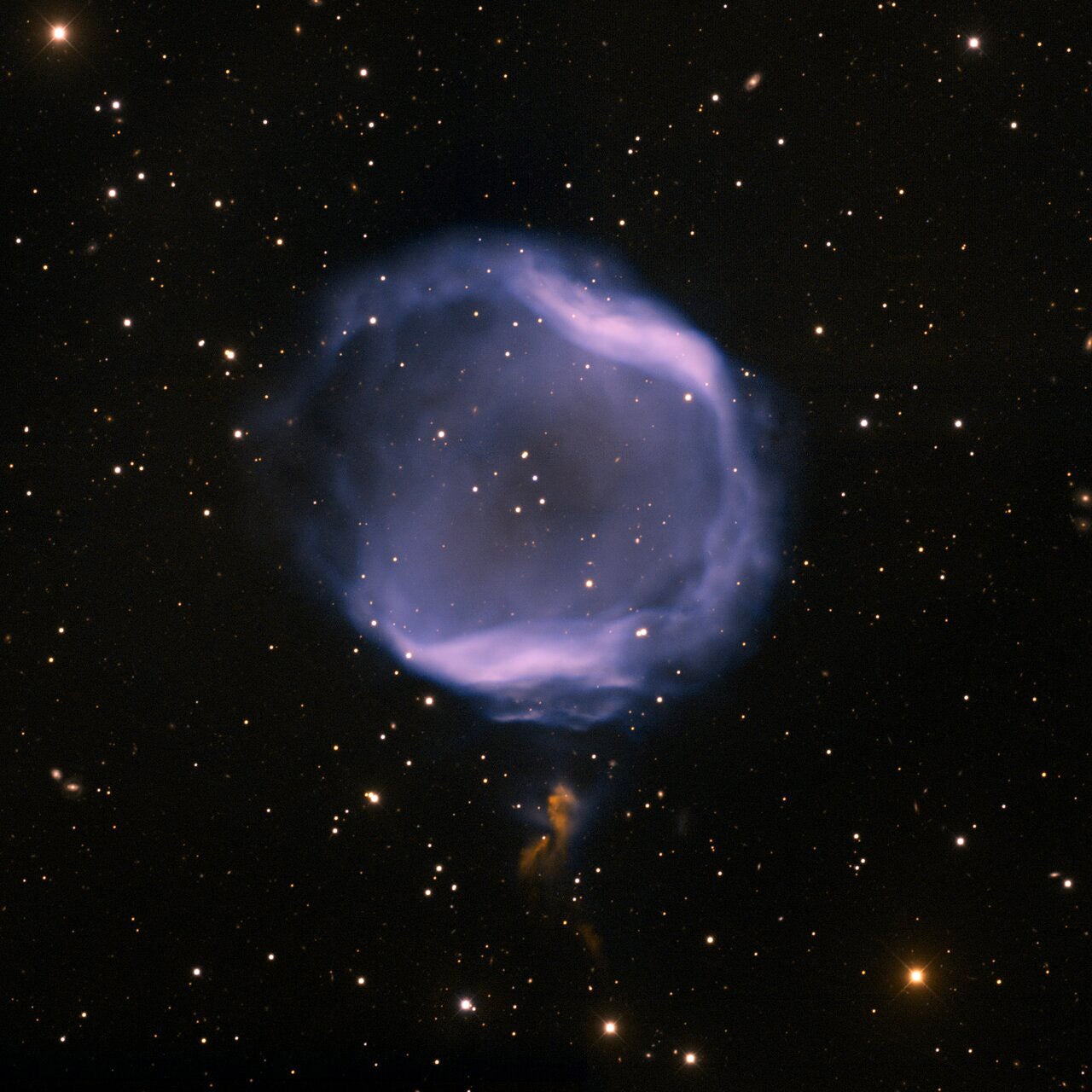
Planetary nebula Jones 1 is named after American astronomer Rebecca Jones, who discovered this weird object in 1941 on photographic plates taken at Harvard Observatory. She was well known for her galaxy studies, and at the time of the discovery, she was an assistant to Harlow Shapley.
Jones 1 is located in Pegasus just north of the Great Square. Although it measures 5′ across, Jones 1 is an extremely faint planetary at 15th magnitude. The white dwarf central star is even fainter at 16th magnitude. (Don’t confuse Jones 1 for Jones-Emberson 1 in Lynx [see #5]; she and Richard Emberson discovered that planetary nebula two years earlier.)
If you compare the appearances of both of Jones’ discovered planetary nebulae, there is definitely a familial similarity. Each shows a wispy face-on ring structure that is highlighted by a pair of brighter lobes of nebulosity that appear opposite of each other. Jones-Emberson 1 is nicknamed the Headphone Nebula after its appearance, but Jones 1 could just as easily carry the same handle.
Jones 1 is also named PK 104–29.1 in The Perek-Kohoutek Catalogue of Planetary Nebulae, compiled by Czech astronomers Luboš Perek and Luboš Kohoutek and published in 1967. Estimates place the planetary nebula at about 2,300 to 2,700 light-years from Earth.
Planetary nebulae are classified based on their shape and structure. Jones 1 is in Class IIIb, meaning it displays an irregular disk of varying brightness and an annular structure. For comparison, Jones-Emberson 1 is a Class IV annular planetary.









